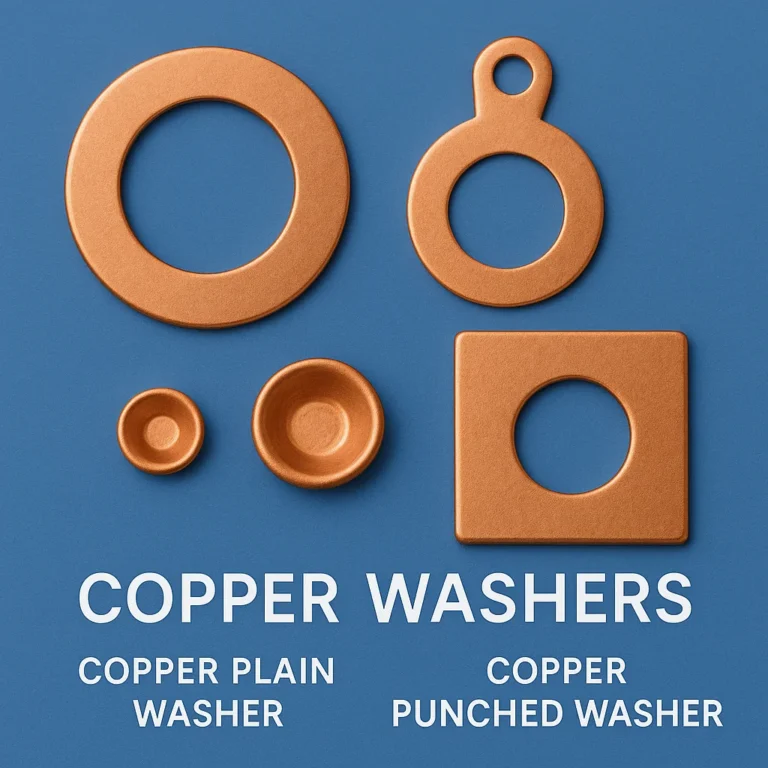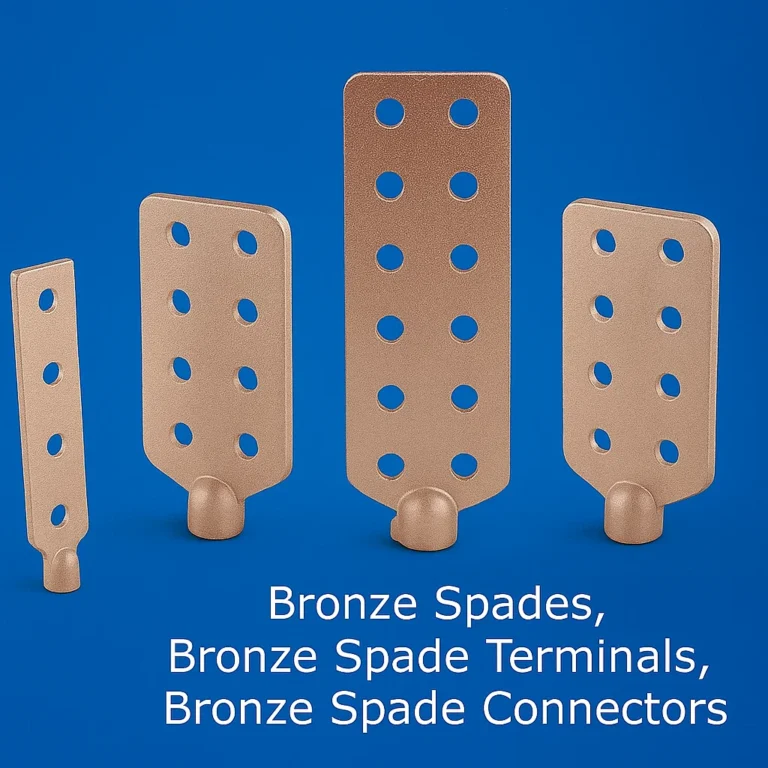Copper Casting Copper CNC Machined Parts, Copper Parts Copper Forged Parts, Copper Forging, Copper Stamping, Copper Stamped Components Copper Gaskets, Copper Stamped Gaskets Copper Milled Parts, Copper CNC Milled Components, Copper CNC Milling Parts Copper Nuts, Copper Hex Nuts Copper Parts Copper Precision Turned Components Copper Parts, Copper Turned Parts, Copper Turned Components Copper Pressed Parts, Copper Sheet Metal Parts, Copper Pressed Components Copper Stamped Parts, Copper Hot Stamped Components


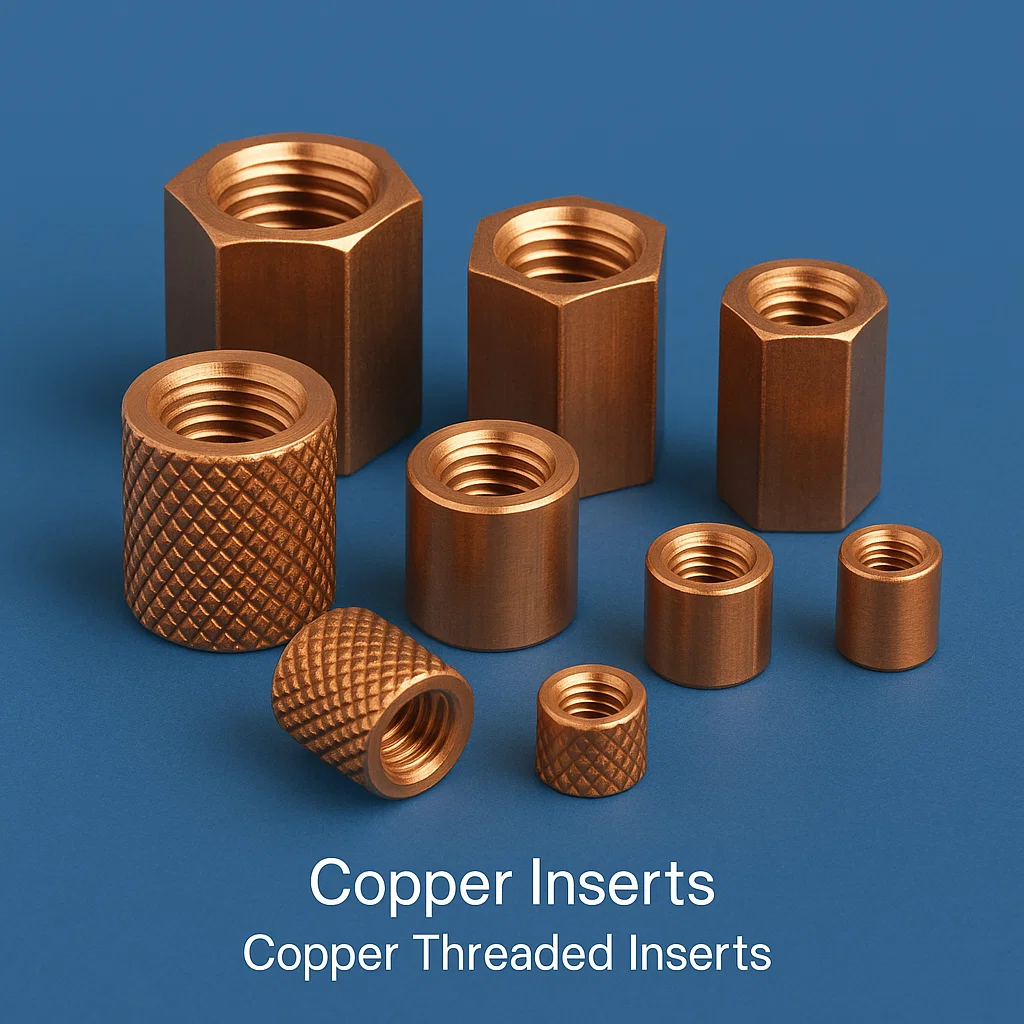
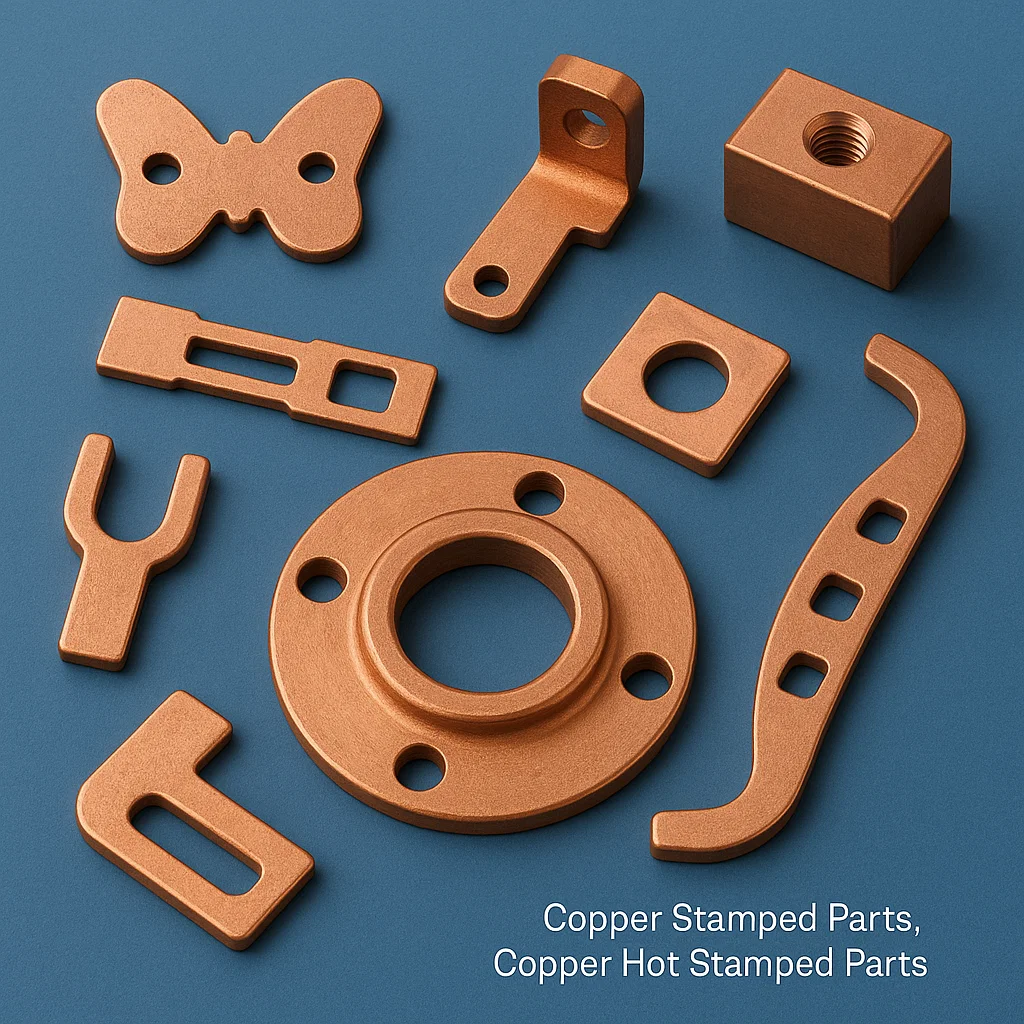
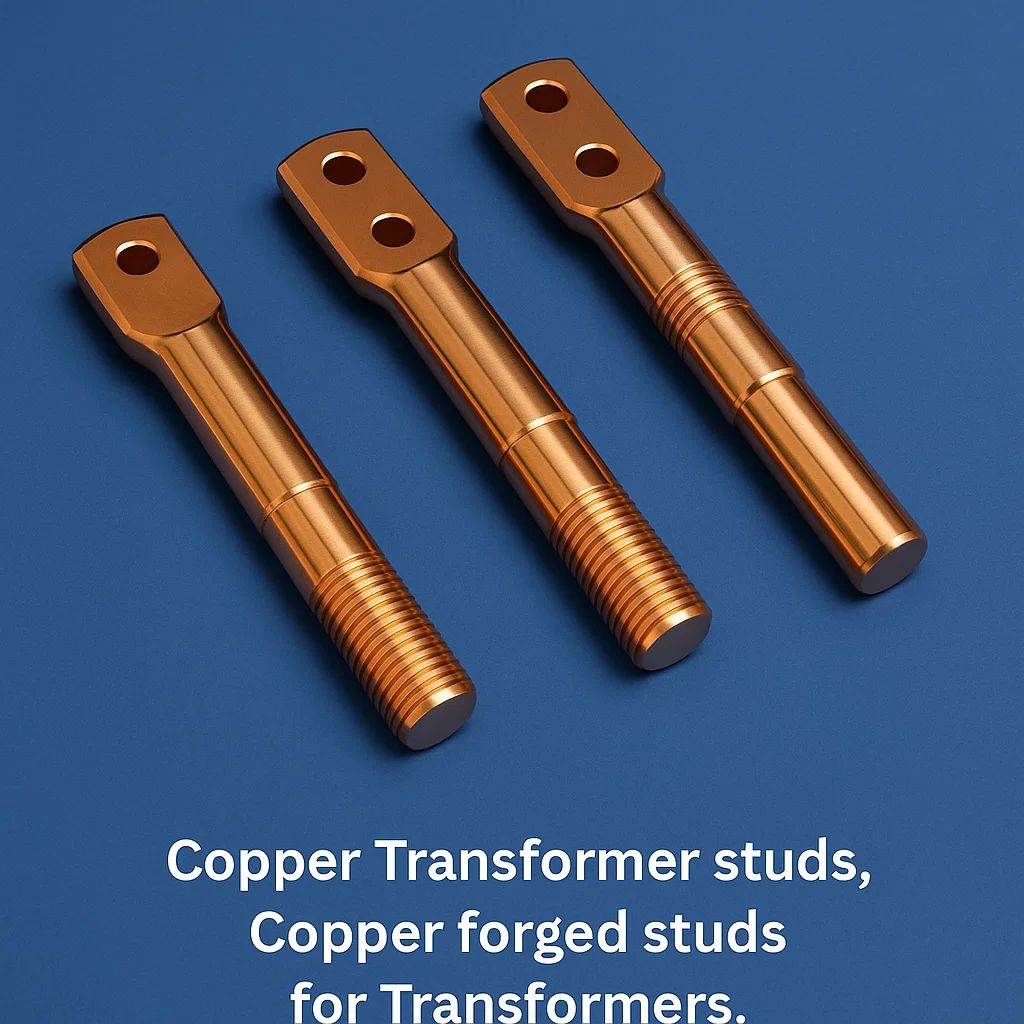
Copper Parts and Copper Components: Manufacturing Processes, Materials, and Applications
Copper has been the backbone of industrial manufacturing for centuries, and in today’s technologically advanced world, precision-engineered copper components are more critical than ever. From electrical power distribution systems to aerospace applications, copper parts deliver unmatched electrical and thermal conductivity, superior corrosion resistance, and exceptional mechanical properties that make them indispensable across virtually every major industry.
This comprehensive guide explores the diverse manufacturing processes, material grades, international standards, and technical specifications that define modern copper component production. Whether you’re sourcing electrical terminals, heat exchanger components, or precision-machined assemblies, understanding these manufacturing capabilities will help you make informed decisions for your specific application requirements.
Why Copper? The Material Advantage
Copper and its alloys offer a unique combination of properties that few materials can match:
Superior Electrical Conductivity: Pure copper exhibits electrical conductivity of up to 101% IACS (International Annealed Copper Standard), making it the material of choice for electrical applications worldwide.
Exceptional Thermal Properties: With thermal conductivity reaching 401 W/m·K, copper efficiently transfers heat in heat exchangers, electronics cooling, and HVAC systems.
Outstanding Corrosion Resistance: Copper naturally resists corrosion in most environments, with specialized alloys available for marine, chemical, and extreme-temperature applications.
Excellent Formability: Copper’s ductility and malleability enable complex geometries through casting, forging, machining, and stamping processes.
Antimicrobial Properties: Copper surfaces naturally eliminate bacteria and viruses, making them valuable in healthcare and food processing environments.
Copper Material Grades & International Standards
Common Copper Alloys for Manufacturing
Understanding material selection is critical to component performance. Here are the most commonly used copper grades:
| Grade (ASTM) | Common Name | UNS | DIN | JIS | EN | Key Properties | Typical Applications |
|---|---|---|---|---|---|---|---|
| C10100 | Oxygen-Free Electronic (OFE) | C10100 | OF-Cu | C1011 | CW008A | Highest conductivity (101% IACS), excellent ductility | High-frequency waveguides, vacuum electronics, RF components |
| C10200 | Oxygen-Free (OF) | C10200 | OF-Cu | C1020 | CW008A | Very high conductivity, no oxygen content | Electrical busbars, critical conductors |
| C11000 | Electrolytic Tough Pitch (ETP) | C11000 | Cu-ETP | C1100 | CW004A | High conductivity (100% IACS), good formability | Electrical connectors, roofing, general purpose |
| C12200 | Deoxidized High Phosphorus (DHP) | C12200 | Cu-DHP | C1220 | CW024A | Good conductivity (85% IACS), excellent weldability | Plumbing, HVAC, tube applications |
| C14500 | Tellurium Copper | C14500 | Cu-TeP | C1450 | CW118C | Excellent machinability, good conductivity | Machined electrical contacts, fittings |
| C17200 | Beryllium Copper | C17200 | CuBe2 | C1720 | CW101C | Very high strength (UTS up to 1400 MPa), good conductivity | Springs, bearings, explosion-proof tools |
| C36000 | Free-Cutting Brass | C36000 | CuZn36Pb3 | C3604 | CW603N | Best machinability (100% rating), good strength | Valves, fittings, gears, nuts, precision parts |
Material Properties Comparison
| Property | Pure Copper (C10100) | ETP Copper (C11000) | DHP Copper (C12200) | Tellurium Copper (C14500) | Beryllium Copper (C17200) | Units |
|---|---|---|---|---|---|---|
| Density | 8.96 | 8.89 | 8.94 | 8.94 | 8.26 | g/cm³ |
| Melting Point | 1084 | 1083 | 1082 | 1075 | 866-980 | °C |
| Electrical Conductivity | 101 | 101 | 85 | 90-98 | 15-25 | %IACS |
| Thermal Conductivity | 401 | 391 | 317 | 335 | 105-200 | W/m·K |
| Tensile Strength (Annealed) | 220 | 220 | 221 | 235 | 485-1400 | MPa |
| Yield Strength (Annealed) | 69 | 69 | 69 | 75 | 170-1200 | MPa |
| Elongation | 45 | 45 | 40 | 35 | 4-50 | % |
| Hardness (Vickers) | 45-50 | 40-80 | 40-85 | 55-90 | 95-375 | HV |
International Material Standards
United States:
- ASTM B124, B152, B187, B370, B624
- UNS: C10100, C10200, C11000, C12000, C12200, C14500, C17200
- CDA (Copper Development Association) designations
European Union:
- EN 1982 (Copper Alloys for Castings)
- DIN 17670, 17672, 17850
- Material Numbers: 2.0040 (Cu-ETP), 2.0060 (Cu-DHP), 2.0070, 2.0080
British Standards:
- BS 2870, 2871, 2872, 2873, 2874
Japanese Standards:
- JIS H3100, H3110, H3130
- Grades: C1020, C1100, C1201, C1220
Indian Standards:
- IS 407, 410, 1545, 6912
Chinese Standards:
- GB/T 5231, 13808, 17791
- Grades: T1, T2, T3, TU0, TU1, TU2
Manufacturing Processes & Technical Specifications
1. Copper Casting
Process Overview: Copper casting produces precision-molded components by pouring molten copper alloys into sand or investment molds. This process is ideal for complex geometries, thick-walled components, and parts requiring excellent mechanical properties.
Manufacturing Methods:
Sand Casting:
- Green-sand or resin-bonded molds
- Weight capacity: Up to 20 kg per piece
- Economical for medium to large production runs
- Excellent for complex internal features using cores
Investment Casting (Lost-Wax):
- Wax patterns with ceramic shell molds
- Superior surface finish and dimensional accuracy
- Ideal for intricate geometries and fine details
- Weight range: 0.05 kg to 20 kg
Common Casting Alloys:
| Alloy | UNS / EN | Key Properties | Typical Applications |
|---|---|---|---|
| C92700 | CuSn5Zn5Pb5 | Leaded tin bronze, high machinability | Electrical connectors, fittings |
| C94300 | CuSn12 | High strength, excellent corrosion resistance | Pump impellers, valve bodies |
| C83600 | CuZn36Pb2As | Free-cutting brass-bronze blend | Electrical components, terminals |
| C84400 | CuZn39Pb3 | Excellent fluidity and castability | Bushings, bearings, gears |
| C86300 | CuZn35 | High tensile strength | Pump housings, marine fittings |
| C92200 | CuSn10 | Phosphor bronze, superior wear resistance | Gears, bearing shells, valve seats |
Dimensional Capabilities:
| Component Type | Weight Range | Typical Dimensions | Tolerance | Surface Finish (Ra) |
|---|---|---|---|---|
| Electrical Castings | 0.1 kg – 5 kg | Custom shapes & cores | ± 0.3% nominal | 3.2-12.5 µm (as-cast) |
| Pump Parts & Impellers | 0.5 kg – 20 kg | Diameters up to 300 mm | ± 0.3% nominal | 3.2-12.5 µm |
| Bushes & Bearings | 0.05 kg – 3 kg | Per engineering drawing | ± 0.3% nominal | 3.2-12.5 µm |
| Machined Surfaces | Any | Per specification | ± 0.02 mm | 0.8-3.2 µm |
Applications:
- Electrical switchgear components
- Pump assemblies and impellers
- Heat exchanger components
- Marine hardware and fittings
- Industrial valve bodies
- Transformer components
Lead Time: 4-6 weeks for sand castings; 6-8 weeks for investment castings including tooling
2. Copper CNC Machined Parts, Copper CNC Screw Machine parts
Process Overview: CNC (Computer Numerical Control) machining offers unparalleled precision and flexibility for producing complex, non-rotationally symmetric copper parts. Multi-axis machining centers enable intricate features, deep cavities, precise contours, and angled holes from solid copper stock.
CNC Turning: Precision automatic lathes and CNC turning centers produce axially symmetric parts by removing material from rotating copper bar stock. Ideal for high-volume production of connectors, terminals, bushings, sleeves, and precision shafts.
Features:
- Bar stock capacity: Up to 60mm diameter, 300mm length
- Excellent concentricity and surface finish
- High-volume production capability
- Standard tolerances: ISO 2768-mK
CNC Milling: Multi-axis CNC machining centers (3-axis, 4-axis, and 5-axis) create complex features, deep cavities, precise contours, and angled holes. Perfect for prototypes, low-volume batches, and highly complex components.
Features:
- Work envelope: 600mm x 400mm x 400mm (X, Y, Z)
- Complex geometries and tight tolerances
- Flat surfaces, slots, grooves, gears, and profiled edges
- Surface finish: Better than Ra 0.8 µm achievable
Swiss Machining: Swiss-type CNC lathes provide exceptional accuracy for long, slender copper parts with complex geometries. The guide bushing provides superior support, minimizing deflection and enabling ultra-precise diameters.
Features:
- Bar stock: 0.5mm to 32mm diameter
- Live tooling for milling, drilling, and cross-holes
- Simultaneous turning and secondary operations
- Diameter tolerances: ±0.005mm achievable
Standard Machining Tolerances:
| Process | Standard Tolerance | Fine Tolerance | Surface Finish (Ra) |
|---|---|---|---|
| CNC Turning | ±0.05 mm | ±0.012 mm | 1.6-3.2 µm (0.4-0.8 µm fine) |
| CNC Milling | ±0.05 mm | ±0.01 mm | 1.6-3.2 µm (0.4-0.8 µm fine) |
| Swiss Machining | ±0.013 mm | ±0.005 mm | 0.8-1.6 µm (0.4 µm fine) |
| Hole Diameters | ISO IT7 | ISO IT6 | – |
| General Dimensions | ISO 2768-mK | Per specification | – |
Applications:
- Electrical busbars and contacts
- Waveguide components
- Heat sink bases
- Custom actuator bodies
- Medical device components
- Precision connectors and terminals
- RF shields and enclosures
- Sensor bodies and housings
Lead Time: 4-6 weeks for standard CNC machining projects
3. Copper Forged Parts & Copper Forging
Process Overview: Copper forging transforms raw copper billets through controlled deformation under high pressure and temperature, enhancing grain structure, eliminating porosity, and achieving superior strength compared to cast or machined alternatives.
Hot Forging:
- Temperature range: 750°C to 950°C
- Optimal material plasticity and reduced forming forces
- Ideal for large, complex components
- Enhanced grain flow and mechanical properties
- Controlled atmosphere furnaces prevent oxidation
Cold Forging:
- Performed at ambient temperature
- Exceptional surface finish and dimensional accuracy
- Work hardening increases strength
- Ideal for smaller, precision components
Forging Methods:
| Method | Capacity | Advantages | Typical Parts |
|---|---|---|---|
| Open-Die Forging | Large components | Flexible, low tooling cost | Large fittings, custom shapes |
| Closed-Die Forging | Precision parts | High accuracy, repeatability | Valve bodies, terminals, connectors |
| Upset Forging | Increased cross-section | Enhanced material properties | Bolts, fasteners, electrode ends |
| Press Forging | 500-2000 tons | Precise load control | Complex electrical components |
| Hammer Forging | Rapid deformation | Quick turnaround | Standard fittings |
Material Grades for Forging:
- C10100, C10200 (Oxygen-Free)
- C11000 (Electrolytic Tough Pitch)
- C12200 (Deoxidized High Phosphorus)
- C36000 (Free-Cutting Brass for lower conductivity applications)
Dimensional Capabilities:
| Component Type | Diameter Range | Length Range | Wall Thickness | Tolerance |
|---|---|---|---|---|
| Forged Fittings | 10-300 mm | 15-500 mm | 2-50 mm | ±0.1 mm |
| Hot Forged Components | 20-400 mm | 25-600 mm | 3-80 mm | ±0.15 mm |
Mechanical Properties: Forged parts exhibit superior properties compared to cast alternatives:
- Aligned grain flow following component geometry
- Improved fatigue resistance
- Elimination of internal porosity
- Enhanced tensile and yield strength
Applications:
- Transformer spades and electrical contacts
- Valve bodies and pipe fittings
- Heat exchanger components
- Marine hardware
- Automotive electrical terminals
- Heavy-duty electrical connectors
Lead Time: 4-6 weeks standard; 8-10 weeks for complex custom tooling
4. Copper Stamped Parts & Copper Stamping
Process Overview: Copper stamping encompasses progressive stamping, deep drawing, and blanking operations utilizing high-speed presses operating at speeds up to 800 strokes per minute. This process is ideal for high-volume production of flat or shallow-formed components.
Progressive Stamping:
- Multiple forming stages in a single press cycle
- Thickness range: 0.1mm to 10mm
- Forming depths: Up to 150mm for deep-drawn components
- Carbide cutting edges for consistent edge quality
- Material utilization optimization
Hot Stamping:
- Temperature range: 400°C to 700°C
- Enhanced formability for high-strength alloys
- Improved grain structure and reduced residual stresses
- Integrated heating and forming systems
Dimensional Capabilities:
| Component Type | Diameter/Size Range | Length Range | Thickness | Tolerance |
|---|---|---|---|---|
| Stamped Terminals | 5-100 mm | 10-200 mm | 0.5-8 mm | ±0.05 mm |
| Stamped Gaskets | 10-300 mm | 10-300 mm | 0.3-6 mm | ±0.05 mm |
| Sheet Metal Parts | 20-500 mm | 20-600 mm | 0.5-10 mm | ±0.08 mm |
Surface Finishes:
| Finish Type | Surface Roughness (Ra) | Tolerance | Applications |
|---|---|---|---|
| As-Stamped | 1.6-3.2 µm | ±0.1 mm | General components |
| Machined | 0.4-1.6 µm | ±0.025 mm | Precision assemblies |
| Polished | 0.1-0.4 µm | ±0.05 mm | Electrical contacts |
| Passivated | 0.8-1.6 µm | ±0.1 mm | Corrosion protection |
Applications:
- Electrical terminals (spade, ring, hook types)
- Stamped gaskets and seals
- Electrical connectors
- Automotive electrical components
- Control panel components
- Appliance wiring terminals
- Pressed brackets and mounts
Lead Time: 4-6 weeks for standard components
5. Copper Gaskets & Copper Stamped Gaskets
Process Overview: Precision-stamped copper gaskets provide superior sealing performance in high-temperature, high-pressure, and corrosive environments. The manufacturing process combines progressive stamping with precision die cutting.
Features:
- Thickness range: 0.3mm to 6mm
- Custom shapes and sizes per specification
- Internal and external cutouts
- Bolt hole patterns to customer drawings
Materials:
- C11000 (ETP) for general applications
- C12200 (DHP) for enhanced formability
- Annealed tempers for maximum conformability
Applications:
- Automotive head gaskets
- Exhaust system seals
- Heat exchanger gaskets
- Flange seals
- Electrical enclosure gaskets
6. Copper Milled Parts & Copper CNC Milling
Process Overview: CNC milling creates flat surfaces, slots, grooves, gears, and profiled edges using rotating multi-point cutters. This process is essential for creating electrical components requiring precise features and excellent surface finishes.
Capabilities:
- Work envelope: 600mm x 400mm x 400mm
- Multi-axis capability (3-axis, 4-axis, 5-axis)
- Tight tolerances: ±0.01mm achievable
- Surface finish: Ra 0.4-0.8 µm
Applications:
- Busbars for electrical distribution
- Switchgear components
- Motor laminations
- Heat sink fins
- Custom electrical housings
- Precision waveguide components
7. Copper Nuts & Copper Hex Nuts
Process Overview: Copper nuts are produced through hot forging, cold heading, or CNC machining, depending on size, thread type, and production volume.
Manufacturing Methods:
- Hot forging for large nuts
- Cold heading for high-volume standard sizes
- CNC machining for custom threads and precision applications
Thread Standards:
- Metric: M3 to M100
- Imperial: 1/4″ to 4″
- Custom threads per specification
Materials:
- C36000 (Free-Cutting Brass) for excellent machinability
- C11000 (ETP) for electrical applications
- C14500 (Tellurium Copper) for precision threads
Applications:
- Electrical assemblies
- Grounding systems
- Non-sparking applications
- Marine hardware
- Heat exchanger assemblies
8. Copper Precision Turned Components
Process Overview: Precision turning creates highly accurate, concentrically perfect components on advanced CNC turning centers and Swiss-type lathes.
Capabilities:
- Diameters: 0.5mm to 60mm
- Length: Up to 300mm
- Concentricity: 0.01mm TIR
- Surface finish: Ra 0.4 µm achievable
Applications:
- Electrical connectors and pins
- Precision bushings
- Medical instrument components
- Aerospace fittings
- Miniature terminals
9. Copper Pressed Parts & Copper Sheet Metal Components
Process Overview: Pressing and deep drawing operations transform copper sheet metal into three-dimensional components through controlled plastic deformation.
Features:
- Sheet thickness: 0.5mm to 10mm
- Drawing depths: Up to 150mm
- Complex geometries achievable
- Minimal material waste
Applications:
- Electrical enclosures
- HVAC ductwork components
- Automotive battery terminals
- Heat exchanger plates
- Decorative components
10. Copper Impact Extrusion Parts
Process Overview: Impact extrusion combines forging and extrusion through high-velocity forming operations, creating hollow components with exceptional wall thickness uniformity.
Features:
- Punch speeds: Up to 10 m/s
- Wall thickness uniformity: ±0.05mm
- Cold-forming process
- Fine grain structure and enhanced properties
Dimensional Capabilities:
| Component Type | Diameter Range | Length Range | Wall Thickness | Tolerance |
|---|---|---|---|---|
| Impact Extruded Parts | 8-150 mm | 20-300 mm | 0.8-5 mm | ±0.03 mm |
Applications:
- Electrical enclosures
- Heat sink components
- Precision fittings
- Thin-walled cylindrical parts
- Leak-tight assemblies
Quality Assurance & Testing
Modern copper component manufacturing incorporates comprehensive quality management systems ensuring consistent performance:
Inspection Methods:
- Coordinate Measuring Machines (CMM)
- Optical comparators
- Digital micrometers
- Profilometers for surface finish
- Hardness testing (Vickers, Rockwell)
Material Testing:
- Chemical composition analysis (OES, XRF)
- Tensile strength testing
- Electrical conductivity verification (% IACS)
- Metallurgical examination
- Non-Destructive Testing (NDT):
- Dye penetrant inspection
- Ultrasonic testing
- X-ray inspection (for castings)
Quality Standards:
- ISO 9001:2015 certification
- First Article Inspection (FAI)
- Statistical Process Control (SPC)
- 100% dimensional inspection for critical features
- Material traceability and certification (MTC/CoC)
Industries & Applications
Electrical & Power Distribution:
- Busbars and electrical contacts
- Transformers and switchgear components
- Circuit breakers and distribution panels
- Renewable energy systems
- Battery terminals and connectors
Automotive & Transportation:
- Electrical harnesses and terminals
- Radiator components
- Brake line fittings
- Sensor housings
- Battery system components
- EV charging infrastructure
Aerospace & Defense:
- Waveguide components
- RF connectors
- Precision bushings
- Heat exchanger elements
- Electrical assemblies
Telecommunications & Electronics:
- Heat sinks and thermal management
- RF shields and enclosures
- Precision connectors
- Antenna components
- Electronic device housings
Medical Devices:
- Surgical instrument components
- MRI-compatible parts
- Sterilizable housings
- Antimicrobial surfaces
Marine & Offshore:
- Corrosion-resistant fittings
- Propeller components
- Heat exchanger tubes
- Valve bodies
- Seawater system components
HVAC & Refrigeration:
- Heat exchanger tubes
- Valve components
- Refrigeration fittings
- Thermal transfer elements
Industrial Machinery:
- Hydraulic fittings
- Bearing components
- Gears and bushings
- Heat transfer components
Surface Finishes & Treatments
| Finish Type | Description | Benefits | Applications |
|---|---|---|---|
| As-Machined/As-Forged | Natural copper surface | Economical, suitable for secondary operations | General applications |
| Polished | Mechanical polishing | Smooth surface, aesthetic appeal | Electrical contacts, decorative |
| Buffed | High-shine finish | Excellent appearance | Architectural, decorative |
| Tumbled | Mass finishing | Deburring, consistent appearance | General components |
| Passivated | Chemical treatment | Prevents tarnishing, extends service life | Long-term storage, corrosion prevention |
| Tin Plated | Electroplating with tin | Enhanced solderability, oxidation resistance | Electrical terminals, connectors |
| Silver Plated | Electroplating with silver | Maximum conductivity, low contact resistance | High-performance electrical |
| Nickel Plated | Electroplating with nickel | Corrosion protection, wear resistance | Industrial applications |
| Gold Plated | Electroplating with gold | Superior conductivity, corrosion immunity | Premium electronics, aerospace |
Packaging & Global Shipping
Professional packaging ensures component integrity during international transit:
Standard Protection:
- Anti-tarnish papers
- VCI (Vapor Corrosion Inhibitor) packaging
- Moisture barriers
- Foam inserts for delicate components
- Anti-rust coatings
Container Options:
- Wooden crates for heavy castings
- Plywood boxes for standard components
- Foam-lined cartons for precision parts
- Custom branded packaging available
- Palletized for fork-lift handling
Documentation:
- Material Test Certificates (MTC)
- Certificate of Conformance (CoC)
- Inspection reports
- NDT reports (when applicable)
- Packing lists
- Certificate of Origin
- Customs declarations
Shipping Terms: FOB, CIF, or DDP Incoterms available with comprehensive logistics support and worldwide delivery capabilities.
Related Parts: Copper Casting Copper CNC Machined Parts, Copper Parts Copper Forged Parts, Copper Forging, Copper Stamping, Copper Stamped Components Copper Gaskets, Copper Stamped Gaskets Copper Milled Parts, Copper CNC Milled Components, Copper CNC Milling Parts Copper Nuts, Copper Hex NUts Copper Parts Copper Precision Turned Components Copper Parts, Copper Turned Parts, Copper Turned Components Copper Pressed Parts, Copper Sheet Metal Parts, Copper Pressed Components Copper Stamped Parts, Copper Hot Stamped Components
Conclusion: Partnering for Precision
The modern copper parts manufacturing industry combines traditional metalworking expertise with cutting-edge CNC technology, advanced metallurgical processes, and stringent quality assurance systems. From precision-cast electrical components to high-speed stamped terminals, from Swiss-machined miniature parts to heavy forged transformer spades, today’s manufacturers deliver solutions that meet the most demanding specifications across every major industry.
When sourcing copper components, consider:
- Material selection based on electrical, thermal, and mechanical requirements
- Manufacturing process optimized for your geometry and production volume
- Quality standards and certifications relevant to your industry
- Lead times and production capacity
- Technical support for design optimization and manufacturability
With decades of global manufacturing experience, adherence to international standards (ASTM, DIN, JIS, EN, IS), and comprehensive capabilities from pattern design through finished parts, specialized copper manufacturers provide the engineering partnership necessary to transform concepts into high-performance reality.
Whether you need a prototype run of 10 pieces or high-volume production of 100,000+ units, whether you require oxygen-free copper for critical electronics or free-cutting brass for economical machining, the right manufacturing partner delivers quality, reliability, and technical excellence that powers innovation worldwide.
For technical consultations, custom quotes, or detailed specifications on specific copper manufacturing processes, contact experienced copper parts manufacturers who understand your industry requirements and can deliver precision components that meet international quality standards. – sales@brass-copper-parts.com

